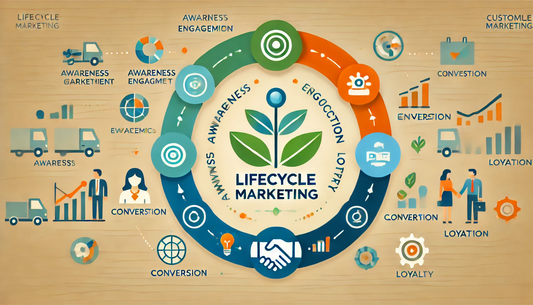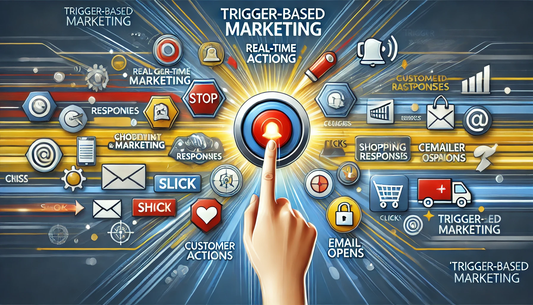The world came to a screeching halt in 2020. Offices emptied, boardrooms fell silent, and the future of work seemed uncertain. But in the midst of this chaos, one name echoed louder than the rest: Zoom. 🌍💻
What started as a niche video conferencing tool soon transformed into the lifeline that connected millions of people across the globe. From office meetings to family reunions, Zoom became more than just software—it became a necessity. 📞
Zoom’s incredible rise from being a simple tool to a global titan isn’t just an inspiring story; it’s a playbook for businesses, large and small, on how to navigate crises, seize opportunities, and build a lasting legacy. 🚀
Here’s how Zoom became the lifeline of remote work and how you can apply its game-changing lessons to your startup. 💡
1. Grabbing the Bull by the Horns: Seizing the Moment
When the pandemic hit, many businesses were scrambling to adjust. But Zoom? It was already prepared. While competitors were caught off-guard, Zoom was ready to serve, offering a frictionless, user-friendly experience that made it the hero of the moment. 🚀
From multinational corporations to yoga instructors, everyone was “Zooming.” Why? Because it was simple, intuitive, and exactly what the world needed in a time of crisis. The perfect product at the perfect time. ⏰
Takeaway: In times of crisis, simplicity is key. If your product is easy to use, you’ll win over users without a second thought. Don't let complexity get in the way of adoption. 🧑💻
2. Scaling at Warp Speed: Keeping Up with Explosive Growth
Zoom’s success came with its own set of challenges. Millions of new users flocked to its platform, pushing the limits of its infrastructure. But instead of crumbling, Zoom expanded at breakneck speed, adapting its systems to handle the surge and maintaining its reliability. ⚡
Where others might have faltered, Zoom thrived, ensuring its platform remained stable even under immense pressure. And that made all the difference. 🌐
Takeaway: Scalability is essential. Build your product with growth in mind and be ready to expand when opportunity knocks. When demand surges, you need to be prepared to handle it without breaking a sweat. 💪
3. Turning Crisis into Credibility: Embracing Transparency
In the midst of its success, Zoom faced a setback. Security concerns like “Zoombombing” threatened to undermine its credibility. But instead of ignoring the issue, Zoom tackled it head-on. 🚨
By rolling out security updates, addressing user concerns, and communicating openly, Zoom demonstrated resilience and restored trust. They didn’t just apologize; they acted. 🙌
Takeaway: How you respond in a crisis can make or break your brand. Be transparent, address issues head-on, and show that you’re committed to improving. Crisis can turn into credibility when handled with care. 💬
4. Adapting to the Unknown: The Power of Flexibility
As the pandemic dragged on, Zoom wasn’t just a tool for business meetings—it became a classroom, a concert hall, and a family reunion space. The company didn’t hesitate to pivot and cater to these evolving needs. 🎶👨👩👧👦
By adapting its platform to serve a wider range of use cases, Zoom cemented its place as an indispensable tool in everyday life, not just work. 💡
Takeaway: Flexibility is your secret weapon. Listen to your users and evolve your product to meet their needs. Don’t be afraid to explore new markets and pivot when necessary. 🛠️
5. Putting Customers at the Core: Building Loyalty
Zoom’s success wasn’t just about technology—it was about people. By prioritizing customer support and listening to feedback, Zoom turned users into loyal advocates. 📢
When users felt heard and their needs were addressed, they became Zoom’s biggest cheerleaders. This customer-first mindset didn’t just retain users—it drove growth. 🌱
Takeaway: Your customers are your lifeblood. Respond to their needs, value their feedback, and let them shape your product. Exceptional customer experience doesn’t just build loyalty; it drives growth. 🤝
6. Strategic Alliances: Multiplying Your Impact
Zoom didn’t go it alone. It forged strategic partnerships with platforms like Slack and Microsoft Teams, amplifying its reach and functionality. These partnerships allowed Zoom to integrate seamlessly into the digital workspace ecosystem. 🖥️
By joining forces with other key players, Zoom expanded its capabilities and audience in a way that would have been impossible alone. 🔗
Takeaway: Identify partners who complement your strengths. Collaborating with the right companies can open doors to new audiences and unlock fresh opportunities. Choose your alliances wisely. 🌍
7. Winning Hearts with Branding: Beyond the Product
Zoom wasn’t just a tool—it became a cultural icon. Its branding was less about features and more about fostering connections during a time of isolation. It became synonymous with virtual connection. 💞
By tapping into the emotional needs of its users, Zoom transformed from a utility into a symbol of togetherness. That emotional connection elevated it far beyond just a piece of software. 🎥
Takeaway: Build an emotional connection with your audience. Your brand should be more than just a product—it should be a solution to their needs. In challenging times, your brand’s story can be more powerful than your technology. 🧠
8. The Relentless Pursuit of Innovation: Staying Ahead
Even after its meteoric rise, Zoom didn’t rest on its laurels. It kept innovating—adding new features, enhancing security, and expanding into new markets. 🚀
Its commitment to constant improvement ensured it stayed ahead of the competition, keeping users engaged and satisfied. Zoom’s relentless pursuit of innovation kept it top-of-mind during the entire pandemic. 🔥
Takeaway: Complacency is your enemy. Keep innovating, keep improving, and keep your users excited. A culture of constant innovation is the key to staying relevant and ahead of the competition. 🔧
9. Mastering the Media Game: Amplifying Your Voice
Zoom didn’t just dominate in its own right; it mastered the media narrative. Through powerful storytelling, user-generated content, and viral social moments, Zoom became a household name. 💬
Zoom’s success wasn’t just built on paid ads; it was built on creating moments that got people talking. By tapping into the collective experience, Zoom became not just a tool, but a cultural symbol. 🎉
Takeaway: Leverage the media and create moments that people will talk about. Encourage user-generated content and use social proof to amplify your brand’s reach. Don’t just play the media game—master it. 📣
10. Building for the Future: Preparing for What’s Next
As the world transitioned to hybrid work models, Zoom continued to adapt, launching features that supported both remote and in-office workers. It wasn’t just about surviving the pandemic—it was about staying relevant in the post-pandemic world. 🌎
By anticipating the future needs of businesses and workers, Zoom positioned itself as an indispensable tool for the long-term. 🔮
Takeaway: Look beyond the immediate and plan for the future. Anticipate the next shift in the market and position your startup to lead, not follow. Adaptability and foresight are crucial for long-term success. 🚀
Zoom’s meteoric rise is a testament to vision, agility, and execution. For startup founders, Zoom’s story provides invaluable lessons on how to turn challenges into opportunities, pivot quickly, and build a brand that resonates with the world. 🌍
The playbook is here—now it’s time for you to write your own success story. 💫










